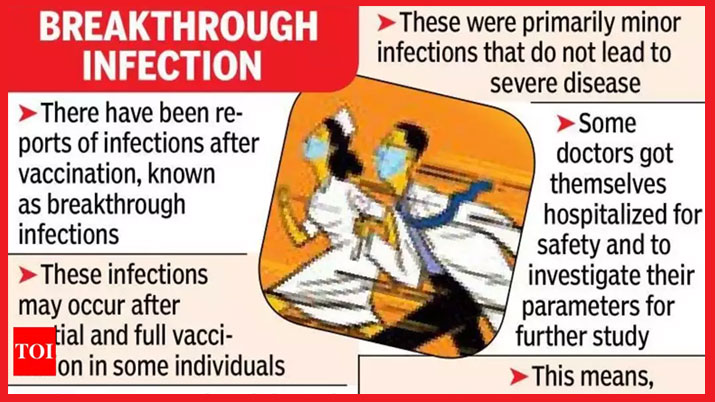Detection of coronavirus in a vaccinated person after 14 days of receiving COVID-19 vaccine is called ‘breakthrough infection’. Meanwhile, United States Vice President Kamala Harris on Thursday spoke with Prime Minister Narendra Modi and conveyed that the US will begin sharing vaccines with India, along with other countries by end of June. Following this, PM Modi thanked her for the all the support and solidarity from the US government, businesses and Indian diaspora. “I deeply appreciate the assurance of vaccine supplies to India as part of the US Strategy for Global Vaccine Sharing,” he wrote on Twitter.
Delhi recorded 487 fresh cases of coronavirus today, lowest since March 16. The positivity rate, number of positive cases identified per 100, stood at 0.61 per cent. 45 patients died due to the disease in the last 24 hours in the capital.
While the recovery rate stands at 97.67 per cent, the death rate was at 1.71 per cent. There were 80,046 tests conducted over the last 24 hours. The vaccines currently available in the US to prevent COVID-19 have proven remarkably safe and highly effective thus far. But, no vaccine is 100% effective. More than 10,000 of these breakthrough cases of COVID-19 have been reported in the US. In April 2021, the CDC reported that in the United States there were 5,814 COVID-19 breakthrough infections, and 74 deaths, among the more than 75 million people fully vaccinated for the COVID-19 virus.
Considering all that could be learned from studying vaccinated people with breakthrough infections, the recent CDC announcement seems surprising. CDC experts recently decided to stop tracking all breakthrough cases, and to instead focus on those requiring hospitalization. The official reasons given for this included:
- Making cases of people who became sicker the priority allows the best use of resources.
- Mild cases are not burdening the healthcare system, and seem unlikely to pose a significant threat of spreading infection to others. This last point remains unproven, however; while some studies have found that the amount of virus carried by people with breakthrough infections is low, making them unlikely to be contagious, and might have exceptions.
- All the cases tracked from January through April of 2021 show no clear pattern that could advance our understanding of why they occur.
- The CDC continues to study vaccine effectiveness in certain groups of people (such as healthcare workers) who experience breakthrough infections, and is collecting all breakthrough data from certain designated states.
The CDC’s decision might be based on a few reasons. First, there’s the challenge of messaging around encouraging people to get vaccinated. Focusing on breakthrough cases may send a misleading impression that the vaccines aren’t effective. This might complicate efforts to battle vaccine hesitancy.
Second, some experts believe that the value of tracking cases that are rare and generally mild is marginal. This may be shortsighted: after all, some people who have had COVID-19 report persistent symptoms like trouble with energy and attention, headaches, and shortness of breath. This is known as ‘long COVID’ or more formally, as post-acute sequelae of SARS-CoV-2 infection (PASC).
Third, it may be too hard to get reliable data from health departments or doctors all over the country. Until we have a national registry of all cases, and every person gets regular testing after vaccination, we may never get a good sense of how common breakthrough cases are or why they happen.


